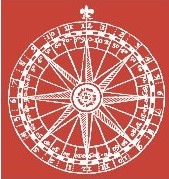"Ryse Up Elisa” – Woman Trapped in a Lay: Spenser's "Aprill"
In Edmund Spenser's "Aprill," Colin Cloute, by creating and controlling an idealized woman, has silenced the source of his own creative power. However, Colin's lay contains hints that Elisa is neither perfect nor passive: complex natural and…
Listed in Article | publication by group Iter Community
Version 1.0 - published on 17 Oct 2025
Licensed under Creative Commons BY-NC 4.0
Description
In Edmund Spenser’s “Aprill,” Colin Cloute, by creating and controlling an idealized woman, has silenced the source of his own creative power. However, Colin’s lay contains hints that Elisa is neither perfect nor passive: complex natural and mythological allusions reveal her vitality and strength. Spenser allows the woman’s voice to undermine the male poet’s authority, thus demonstrating the difficult power struggle between masculine and feminine qualities, between art and life, that both limits and frees the poet in his attempt to create art.
Cite this work
Researchers should cite this work as follows:
Tags
Notes
Original publication: Micros, Marianne. ""Ryse Up Elisa” – Woman Trapped in a Lay: Spenser's "Aprill"." Renaissance and Reformation 29 (2): 2010. 63-73. DOI: 10.33137/rr.v29i2.11413. This material has been re-published in an unmodified form on the Canadian HSS Commons with the permission of Iter Canada / Renaissance and Reformation. Copyright © the author(s). Their work is distributed by Renaissance and Reformation under a Creative Commons Attribution-NonCommercial 4.0 International License. For details, see https://creativecommons.org/licenses/.
Publication preview
Iter Community
This publication belongs to the Iter Community group.
When watching a publication, you will be notified when a new version is released.
